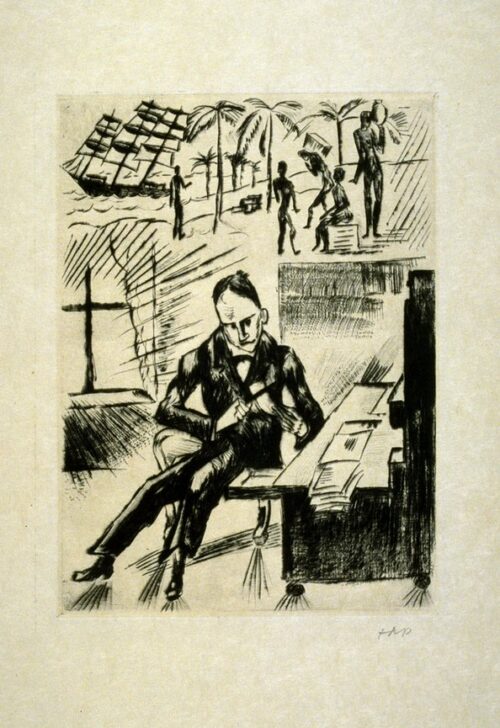Heidenstamm, from “Marsyas”
Max Pechstein

Description
In April 1914, Max Pechstein traveled to Palau, a collection of islands in the South Pacific that was then a German colony, and saw firsthand the art of the islands’ inhabitants. This indigenous art, also being exhibited in ethnographic museums and galleries throughout Germany, deeply influenced the Expressionists. The artists appreciated the bold technique and “primitive” style of this art and in its simplicity regarded it as free from the complexities and constraints of modern civilization.
Pechstein had purchased an island and settled there when World War I invaded his refuge. Captured by the Japanese army, he spent several months in a prison camp. Following his release, he made his way east to New York, where he boarded a Dutch steamer and reentered Europe on forged papers. By the autumn of 1915, he was back in Germany and soon drafted into infantry service. Heidenstamm, a word meaning pagan tribe, marks the year of Pechstein’s return to art following a three-year hiatus.
Text written by Katharine A. Weiss, Exhibitions Assistant, on the occasion of the UMMA exhibition Graphic Visions: German Expressionist Prints and Drawings, January 25–April 6, 2003, West Gallery
Usage Rights:
If you are interested in using an image for a publication, please visit https://umma.umich.edu/request-image/ for more information and to fill out the online Image Rights and Reproductions Request Form.